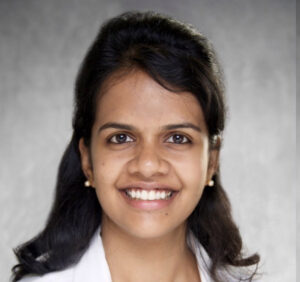 Nearly one-third of academic physicians surveyed, including many rheumatologists, were considering leaving their institutions within two years of the survey, often because of a lack of professional fulfillment or from professional burnout, according to a study published in JAMA Network Open in fall 2023.1,2 That amount of physician turnover contributes to an interruption of patient care and professional relationships, and it financially strains the healthcare system, says lead author Jennifer A. Ligibel, MD, Department of Medical Oncology, Dana-Farber Cancer Institute, Boston. It can also further reduce an already short supply of physicians because some will leave medicine for other pursuits.
Nearly one-third of academic physicians surveyed, including many rheumatologists, were considering leaving their institutions within two years of the survey, often because of a lack of professional fulfillment or from professional burnout, according to a study published in JAMA Network Open in fall 2023.1,2 That amount of physician turnover contributes to an interruption of patient care and professional relationships, and it financially strains the healthcare system, says lead author Jennifer A. Ligibel, MD, Department of Medical Oncology, Dana-Farber Cancer Institute, Boston. It can also further reduce an already short supply of physicians because some will leave medicine for other pursuits.
The authors suggest that a comprehensive approach is needed to stem the flow of unhappy physicians looking to leave their posts. The survey highlights areas of concern that could be addressed through programs focused on reducing burnout and increasing professional fulfillment to encourage physicians to stay in their roles, says Dr. Ligibel.
“It may seem obvious, but physicians who are engaged in their work and more professionally fulfilled are more likely to stay in their jobs,” she says.

Dr. Ligibel
The survey was offered to 37,511 healthcare workers and the analysis included 18,719 attending-level medical specialists at 15 academic medical institutions that participate in the Healthcare Professional Well-Being Academic Consortium. Researchers collected data from October 2019 to July 2021 and conducted analyses from May 2022 to March 2023.
The main outcome of the cross-sectional study was intent to leave (ITL), defined as at least moderate intention (score of 2 on a 0 to 4 scale) to leave one’s institution within the next two years. Out of 18,719 academic physicians surveyed, 32.6% reported either moderate or higher intention to leave their institution within two years.
1/3 Plan to Leave
At 35.3%, rheumatologists ranked in the upper third of specialists surveyed at academic institutions who intend to leave their current job. Among all 53 specialties in the study, the clinicians with the lowest and highest intention to leave were those in nuclear medicine (13.6%) and anesthesiology (46.8%), respectively.
Priyanka Iyer, MD, a rheumatologist at UC Irvine Medical Center, California, and associate fellowship director, Division of Rheumatology at UCI School of Medicine, says the survey rang true for her on several fronts after she moved from Iowa to California for a new job.
She experienced culture shock and isolation from colleagues which left her questioning her decision. It was a taxing and stressful period in her life because she was a new mother of an infant and the move occurred in March 2020, just before the COVID-19 pandemic thrust the medical community into overdrive.
“I moved from an institution where all the rheumatologists worked in the same clinic and saw patients together to a place where, in many of the clinics, I was the only practicing rheumatologist,” says Dr. Iyer. “All the meetings were virtual, so I never got to know another person—what their interests are or what their family was like or really anything at all.
“There weren’t any social events, and that really had an impact on my mental health,” she says.

Dr. Iyer
During that time, Dr. Iyer felt a keen lack of fulfillment, and she wanted more professional support and interaction with others in her specialty. She was so unsure about her work situation that she thought twice about buying a house. “I felt like I [didn’t] know if I [would] be here in a year just because I never had the opportunity to interact with another rheumatologist in person for several weeks,” she says.
Burnout vs. Fulfillment
Researchers assessed burnout, professional fulfillment and other well-being variables to explore why physicians planned to leave or stay. For example, work efficiencies, supportive leadership and a sense of being valued are factors that were linked to a lower likelihood that an individual planned to leave their job, says Dr. Ligibel.
The survey included several determinants that respondents reviewed and selected from a range of options on a Likert scale of agree or disagree, satisfied or not, true or not and never or always. The list covered supportive leadership behaviors, personal-organizational values alignment, self-valuation, negative impact of work on personal relationships, depression, anxiety, electronic health records (EHR) helpfulness, EHR hassles, control over schedule, peer support, sleep-related impairment, meaningfulness of clinical work, COVID-19 organizational support and perceived gratitude.
Survey questions related to professional fulfillment sought to capture how people felt about their institution and its leadership and values, Dr. Ligibel says. Burnout in the context of the survey centered around the relationship of healthcare workers to their jobs. In the medical field, “people often have this sense that they’re not accomplishing anything even when they’re working hard,” which can lead to burnout, notes Dr. Ligibel.
Overall, more than one-third of the entire cohort of 18,719 physicians met criteria for burnout, accounting for 37.9% of those surveyed. A similar, slightly higher, proportion, at 39.3%, met criteria for professional fulfillment, according to the article.
Among rheumatologists in the survey, 39.6% reported burnout and 32.7% reported professional fulfillment. The specialty with the lowest rate of burnout was nuclear medicine at 24% and the specialty with the highest rate of professional fulfillment was radiation oncology at 54.4%.
Survey results showed a one point increase in burnout measured on a 0–10 scale was directly associated with ITL, while a one point increase in professional fulfillment was inversely associated with ITL. Outcomes were adjusted for demographics.
“When people are more fulfilled in their jobs, they’re less likely to leave,” says Dr. Ligibel. “Conversely, if they are more burned out, they are more likely to leave.”
Burnout and fulfillment weren’t always opposing forces, however.
“These are often inversely related, but not always. … There were some groups that were found to have higher levels of burnout and yet they were highly professionally fulfilled,” says Dr. Ligibel. “There were other groups that weren’t very burned out, but they still weren’t professionally fulfilled. … The two things are related, but they are not always directly related to each other.
“It’s not just that you’re not burned out, but you really do need to be engaged in the work that you’re doing to want to stay.”
The authors note that several individual and institutional factors were significantly associated with either high or low rates of ITL after adjustment for gender, age, race, specialty, burnout and professional fulfillment.
Depression and a negative impact of work on personal relationships contributed to a higher ITL rate, states the article. Peer support, aligned values, COVID-19 organizational support and EHR helpfulness were among factors associated with lower ITL.
The study findings reflect similar concerns expressed by Dr. Iyer, who says various aspects of well-being are often connected. The stress on young parents like herself, juggling schedules and priorities both at home and work, can increase a feeling of burnout, she says.
At the office, tending to electronic health records often requires repeated resubmission of paperwork on denied prescriptions, which is frustrating because the task is not adequately compensated and takes up valuable time, says Dr. Iyer.
“So if I’m seeing patients from 8 to 5 and I’m frequently booking through my lunch hour, the only time I can get to all of this is before 8 or after 5,” says Dr. Iyer. “Many times, that’s not appropriate care.
“So, I think that would lead to an increase in burnout, and I directly attribute that to administrative burden.”
Mental Health Challenges
Dr. Iyer believes it’s also important to promote well-being among academic physicians beyond the structure of work life. Encouraging physicians to discover outside interests, take up a hobby, or become physically active fosters good mental health, she says.
“Or [if] they’re doing something else unrelated to medicine to keep them mentally safe,” says Dr. Iyer. “I think that plays a huge role in promotion of well-being and minimizing burnout.”
Burnout was noted in 42.2% of women and 33.0% of men in the survey, whereas 45.4% of men and 34.1% of women met criteria for professional fulfillment. In general, women consistently have higher levels of burnout and lower levels of professional fulfillment than men, says Dr. Ligibel.
“But interestingly, in this survey, there wasn’t very much difference in the likelihood of women vs. men expressing an intention to leave their jobs,” notes Dr. Ligibel.
“In fact, women were actually a bit less likely than men to express an intention to leave,” she says. “So although women may not be as satisfied with their work, they are not necessarily more likely to leave.”
Dr. Iyer notes that her situation has improved over the past three years.
“Our divisional chief has been extremely supportive in helping me build some of the social connections and find an encouraging mentor, which has really made me want to stay,” says Dr. Iyer.
This study is not the first to indicate that a large fraction of physicians in the country are reconsidering remaining at their jobs or in medicine, but it does add another piece to the puzzle of the current and future landscape, notes Dr. Ligibel.
“Given that these data were collected between 2019 and 2021, it may be that some of the older physicians thought about retiring due to the pandemic,” says Dr. Ligibel. “I think there’s a lot of different potential explanations for the high proportion of individuals who expressed an intent to leave, but the bottom line is that a lot of people expressed this. … One-third of the workforce expressing at least a moderate intention to leave within two years … it’s a lot of physicians.”
Researchers continue to collect data from the participating institutions and expect to update information that could be pandemic-related, says Dr. Ligibel.
“One of the other things we’re really interested in doing over time is asking a little bit more about what people plan to do if they’re thinking about leaving,” she says. “Is it to leave medicine? Is it to retire? Is it to go to another institution?”
Information gained from this study and additional research could help the process of building programs that encourage doctors to want to stay in medicine, says Dr. Ligibel. That includes initiatives that cultivate good relationships with their peers and leaders, as well as improving efficiency in the work place.
“Collecting data like [these] is kind of the first step, but obviously we need to take this information and use it to take action,” she says.
Catherine Kolonko is a medical writer based in Oregon.
References
- Ligibel JA, Goularte N, Berliner JI, et al. Well-being parameters and intention to leave current institution among academic physicians. JAMA Netw Open. 2023 Dec 1;6(12):e2347894.
- Ligibel JA, Goularte N, Berliner J, et al, Well-being parameters and intention to leave current institution among academic physicians. JAMA Netw Open. 2023 Dec 1;6(12)(suppl 1).


